With both Inter and Milan getting back their identity Derby Della Madonnina got back to where it belongs – among the most exciting derbies out there. The teams from Milan offered a great spectacle to the fans at the full San Siro stadium, ending up scoring six goals.
The full turnover added even more shine over Inter’s 4-2 win over their greatest rivals and gave a sign that they know how to boost their performance and fight till the end. That is definitely something that Juventus need to have in mind in the title challenge.
Despite the result, in the first half, Milan showed a clear and well-executed strategy, which resulted in them scoring twice. They controlled the game at first, but Inter managed to increase the tempo after the break and get the most out of their speed and fluid connection.
This tactical analysis aims to break down both teams’ tactics and look into why Milan wasted their 2-0 advantage to end up with empty hands.
Lineups
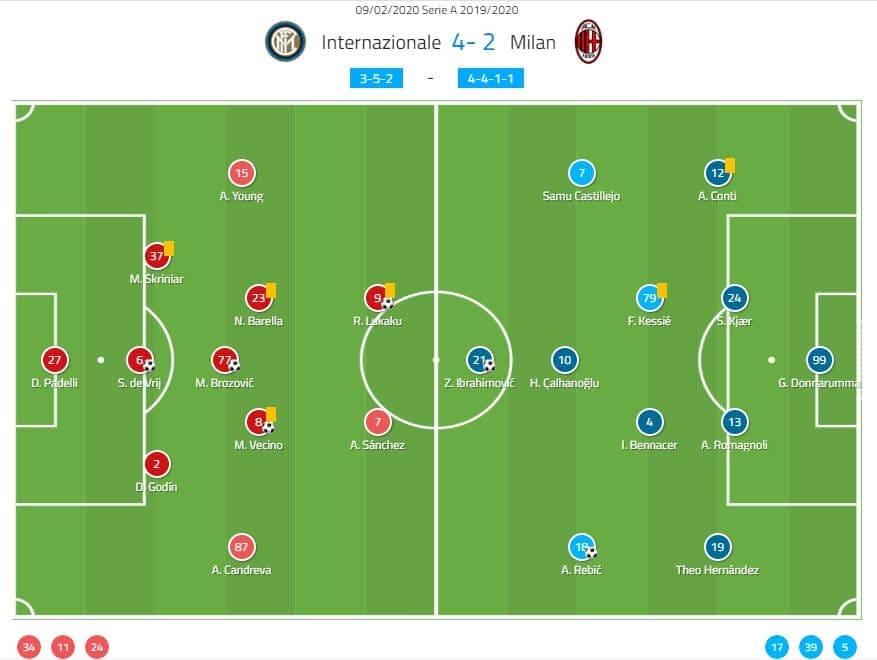
Antonio Conte didn’t take any risks, sticking to the 3-5-2 formation. The goalkeeping spot was occupied by Daniele Padelli due to Samir Handanovič’s injury. The back-three contained Milan Škriniar, Stefan de Vrij and Diego Godín. Ashley Young and Antonio Canreva were used in the role of wing-backs, with a central midfield including Nicolò Barella, Marcelo Brozović, Matías Vecino. The attacking duo was formed by Alexis Sánchez and Romelu Lukaku.
Stefano Pioli relied on more of a 4-2-3-1 formation. Gianluigi Donnarumma covered the goal, supported by Theo Hernández, Alessio Romagnoli, Simon Kjær and Andrea Conti. Ismaël Bennacer and Franck Kessié were responsible for covering the central areas, whilst Ante Rebić, Hakan Çalhanoğlu and Samu Castillejo were more attack-minded, supporting Zlatan Ibrahimović at the top.
Milan’s press vs Inter’s defensive structure
Milan had a very clear attack-minded approach since minute one and immediately tried controlling the tempo and getting more time on the ball. They started off by using quick short pass combinations in efforts to advance the ball as quick as possible. They committed many players to their attacking ventures and pressed a lot.
This would frequently pin Inter back in their 5-3-2 out of possession. Inter structured well defensively, limiting the space between the lines and not giving Milan’s attackers’ any space for movement.
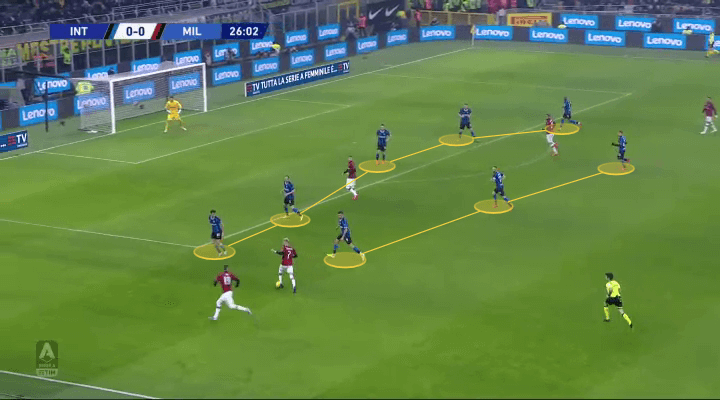
What they failed to avoid, though, is being stretched out on the flanks and opening spaces for Ibrahimović, Çalhanoğlu and Rebić to exploit. They would often fall victim of Rebić and Hernández’s combinations on the left flank. Both of Milan’s full-backs were highly positioned, but the Frenchman was constantly going forward in the opposition half.
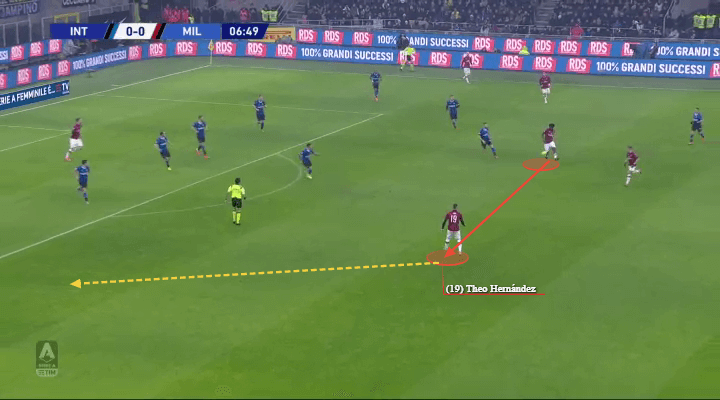
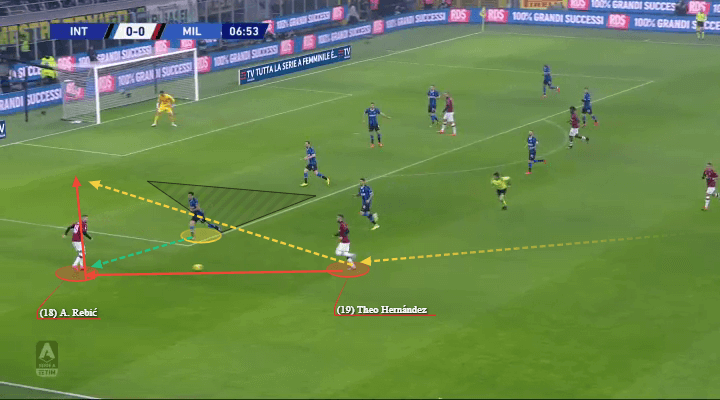
Their lack of precision in the duels resulted in them losing the ball way too often and allowing Milan to invade their half quickly. In the first half, Inter would lose the ball in their own half so often, that it led to a whole seven shots for Milan.
In the second half, Inter focused on their pass accuracy and precision and didn’t allow their opponents to reach the goal once they got the possession of the ball. They made sure to secure their defensive third and managed to keep the ball for longer periods of time. Milan were that successful most of the time, due to their aim to win the ball back (recovering the ball 81 times throughout the game). They recovered the ball even more frequently in the second half, but Inter increased their awareness and immediately had a player to cover the ball carrier.
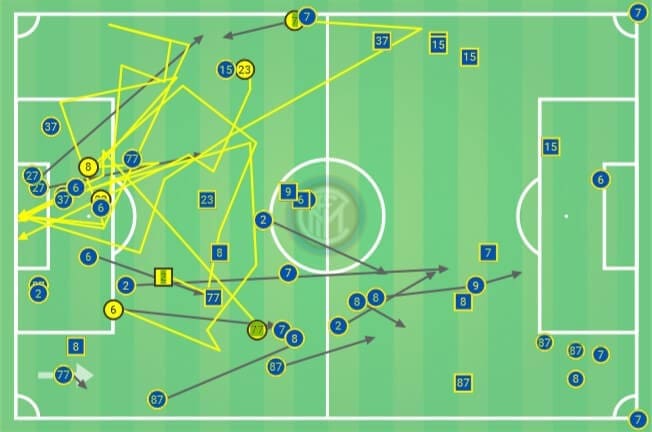
When defending deep, Inter overloaded the box area trying to block the passing lanes and cover their own third entirely. Milan’s response to that was using short pass combinations and switching play to bypass the press. Brozović was actively involved in the team’s defensive actions and had a huge impact on covering his teammates. As per usual, Inter applied high press and tried recovering the ball in the opposition half too.
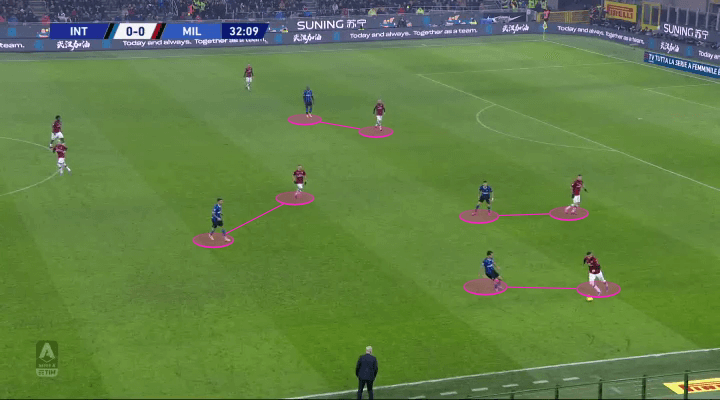
That’s one of the reasons Milan used long balls in their build-up. They tried supplying the attackers directly with long balls to the opposition half.
Despite that, they mostly relied on building up from the back using the full-backs and focusing their efforts on the flanks. That was, as mentioned, in efforts to stretch out the opposition defence and exploit the gaps.
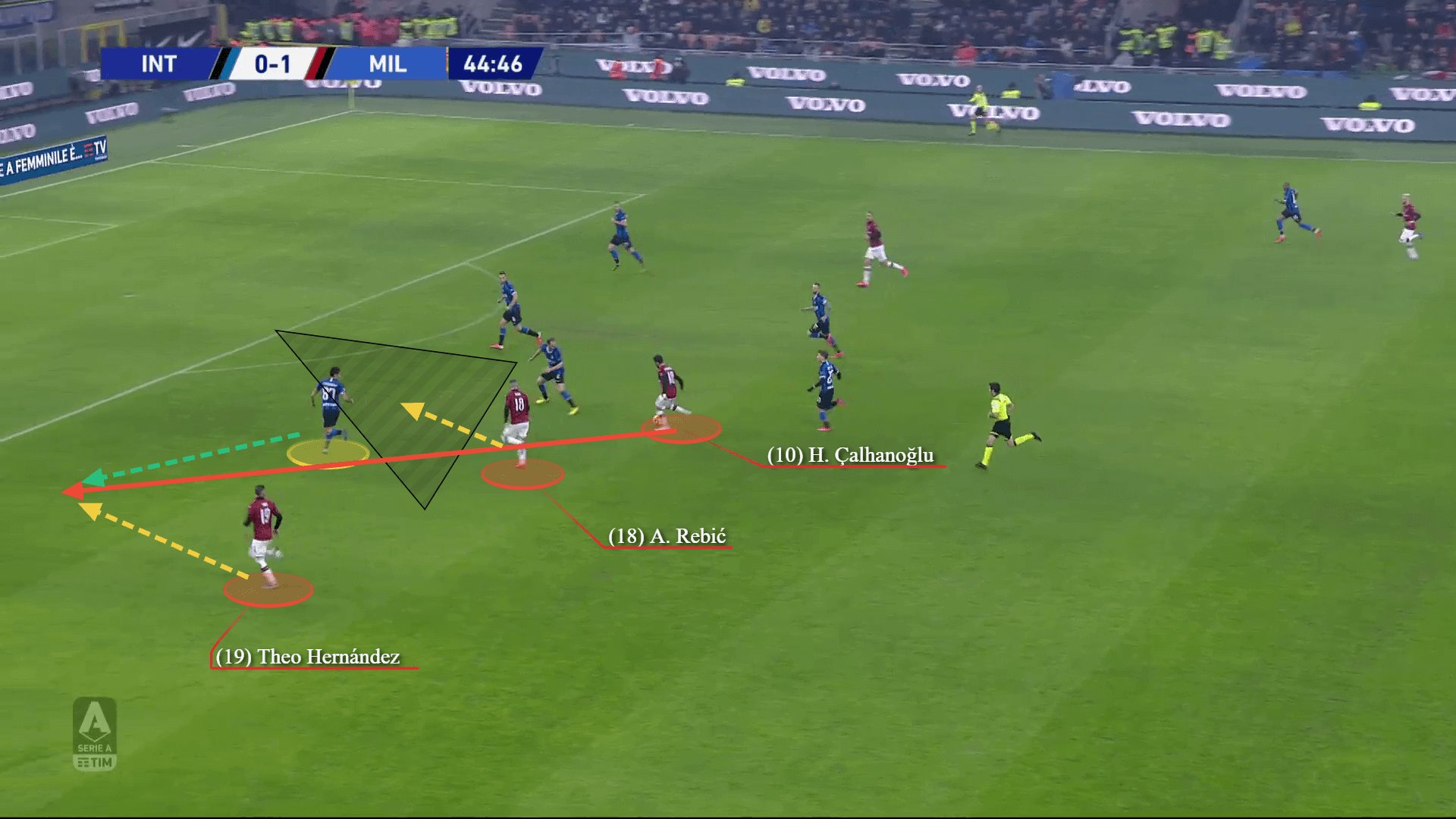
Despite Škriniar’s individual mistake for Milan’s second goal, what made impression is Inter’s intelligent positioning when defending set-pieces and corners in particular. They would make sure that they’ve covered every opposition player properly. This performance was transferred to their actions when defending crosses too. Milan managed to cross 28 times, but only six of them were successful, mostly thanks to the Nerazzurri’s accurate defensive actions.
Inter’s build-up vs Milan’s counter-press
Milan did a very good job of troubling Inter’s build-up. Their intensive counter-press didn’t allow the opposition to build-up from the back. As already mentioned, their constant aim to win the ball back would pin Inter deep in their own half and force them to send the ball back frequently, often using the goalkeeper for retaining possession. They didn’t give their opponents any space for circulating the ball. Combining high press starting with the attackers and intelligent midfield positioning, blocking the passing lanes, gave Inter no options but to send back or use long balls.
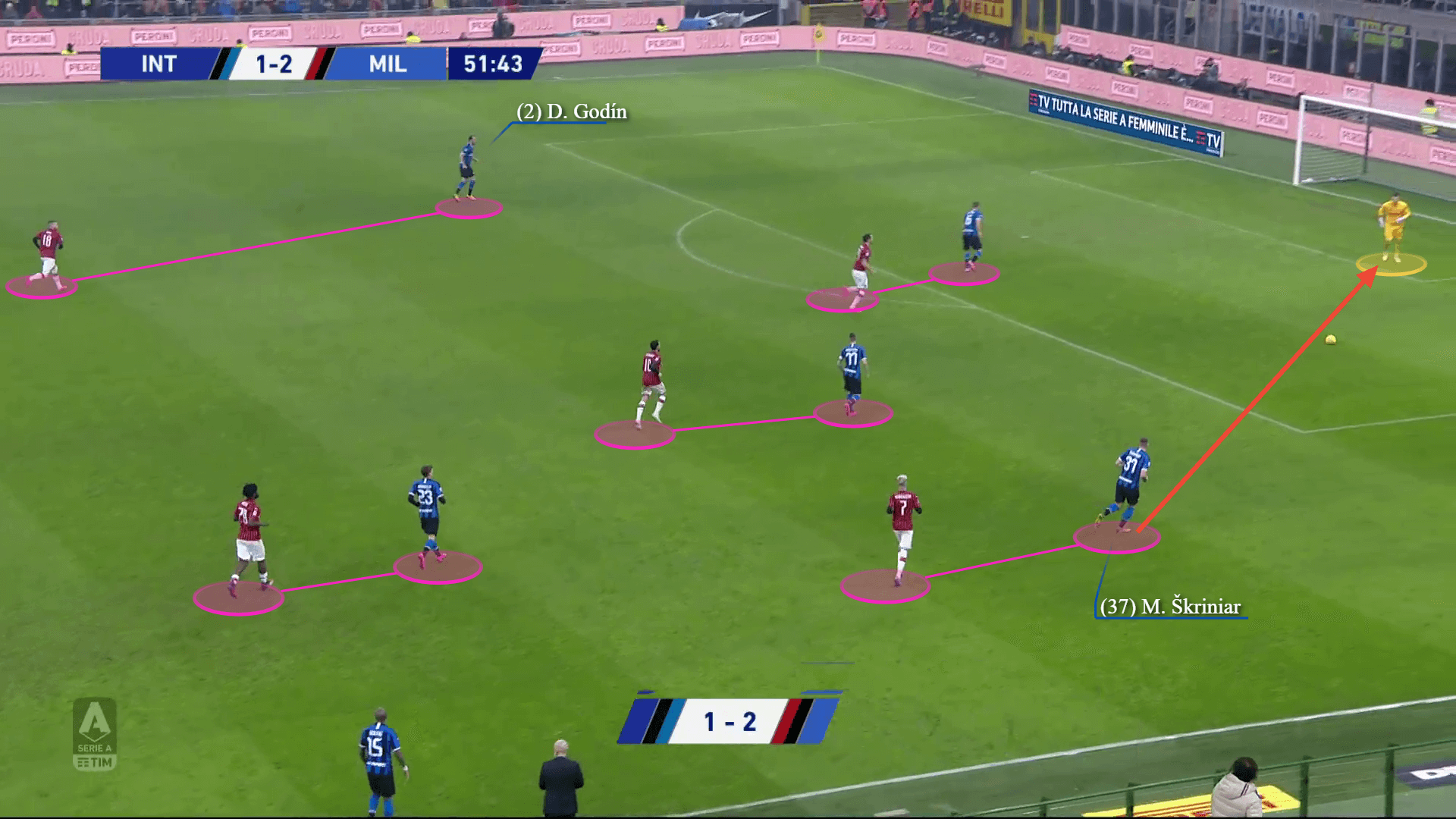
In the second half, it proved right that this strategy could be risky, especially against teams like Inter, who have attacking players with extremely strong positional awareness. Allowing Inter to send long balls wasn’t the best-case scenario in the presence of Lukaku, who is known for his off the ball movement and the way he takes on his makers.
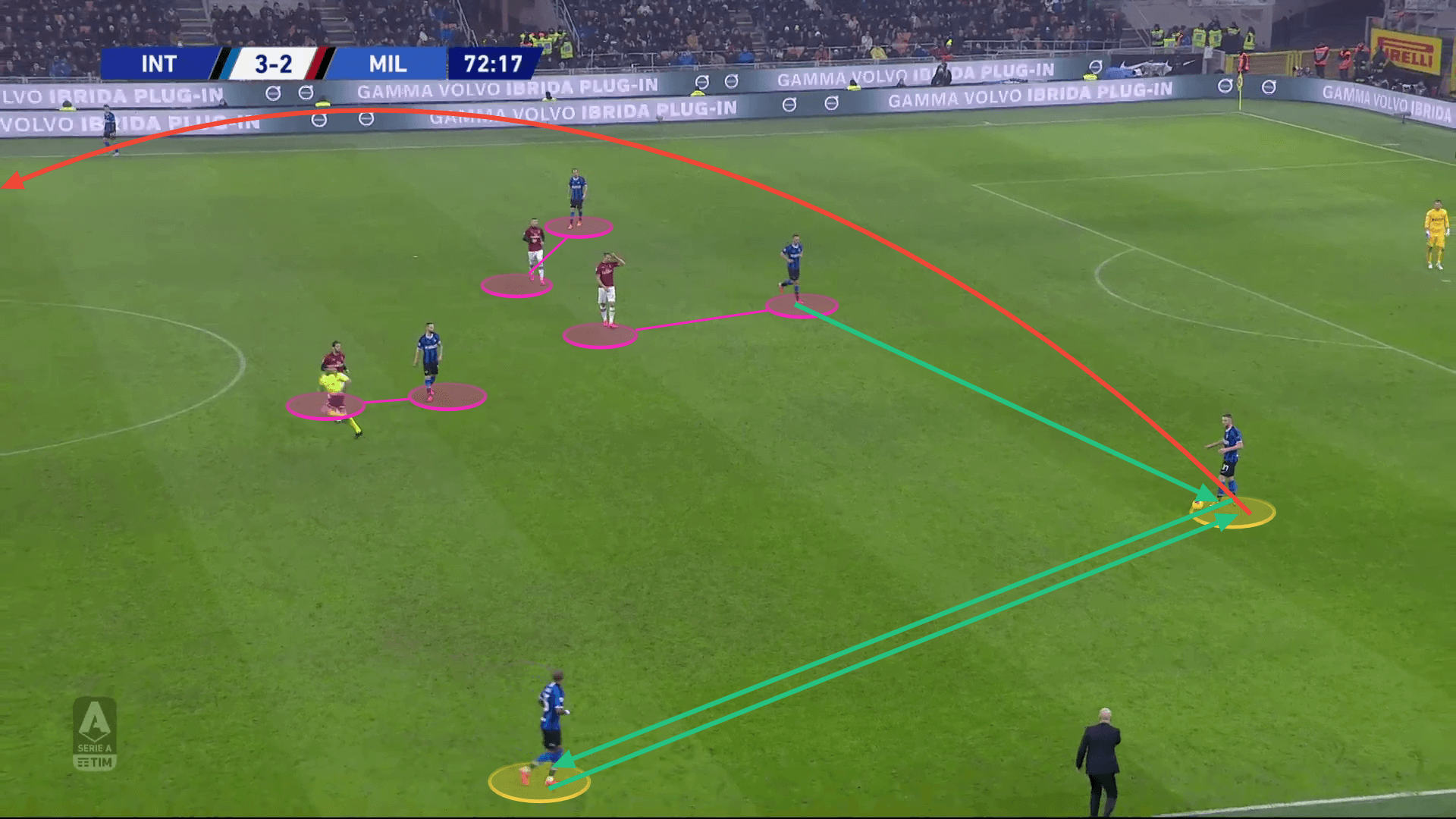
In the rare times Milan allowed their opponents to build-up from the back, they made sure to intensely press the ball carrier and block his passing options. Inter would use their wing-backs when building up from the back which would force the opposition use a different strategy than the flat backline trying to avoid being stretched out wide. They would sometimes form defensive triangles on the flanks in efforts to stop Inter’s creativity and player rotations.
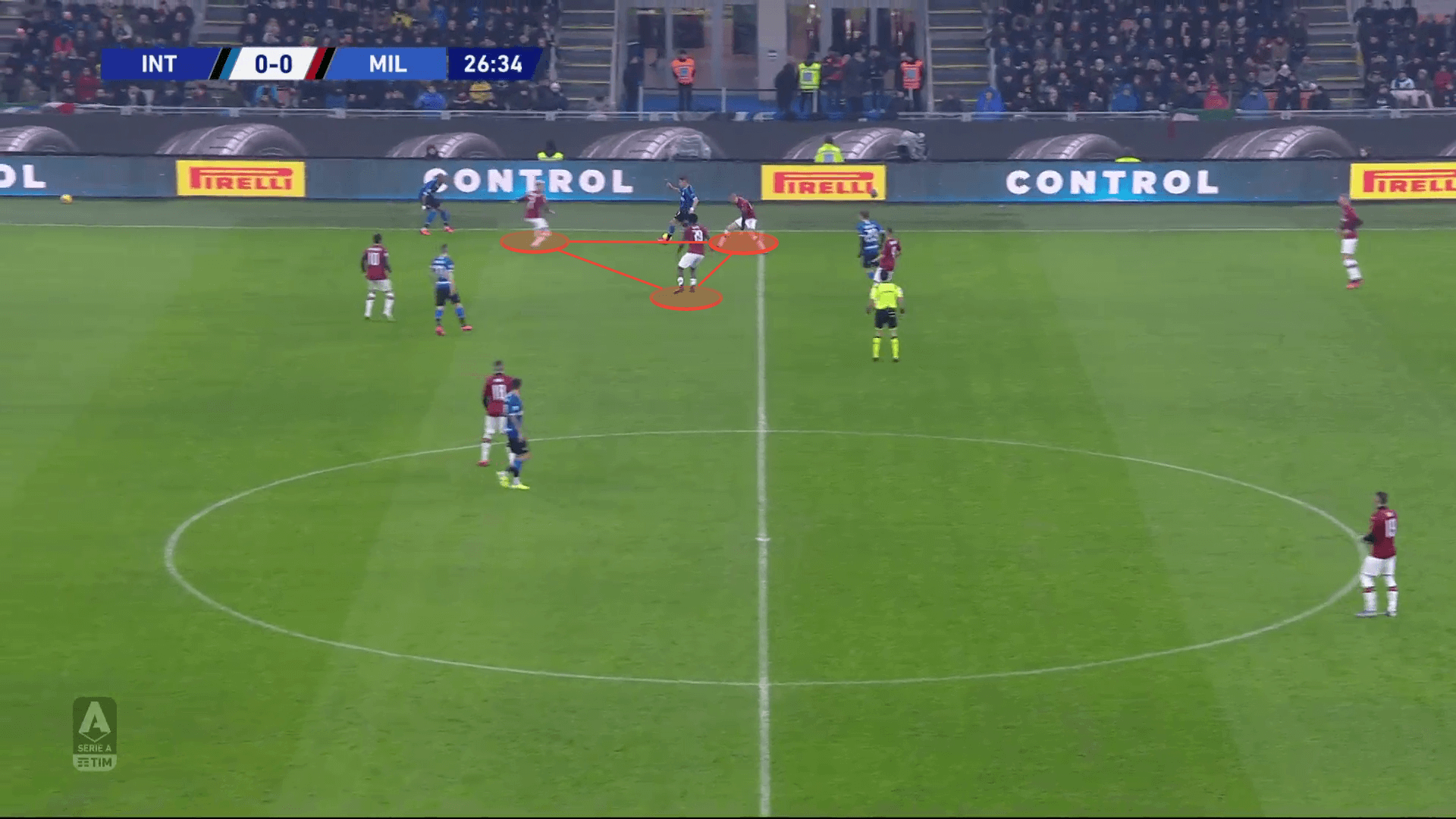
They weren’t that organised when defending in the box though. In the occasion’s Inter managed to reach the final third, Milan would fail to cover the attackers properly, allowing them to be creative and use their intelligent movement.
Inter’s counters and Lukaku’s impact
Lukaku remained the biggest threat for Milan’s goal both directly and indirectly. He would use his outstanding off the ball movement in the two occasions.
Firstly, he is very strong when positioned in and around the box, being a threat on his own or offering an option for a pass combination. As mentioned, Milan would be more chaotic when defending in the box, being hard for them to cover all Inter players. Using smart and difficult passes is something common for Inter’s attacking players, being able to knock out defenders in the blink of an eye. Lukaku has also a great contribution in the air, being the player with most won aerial duels on average.
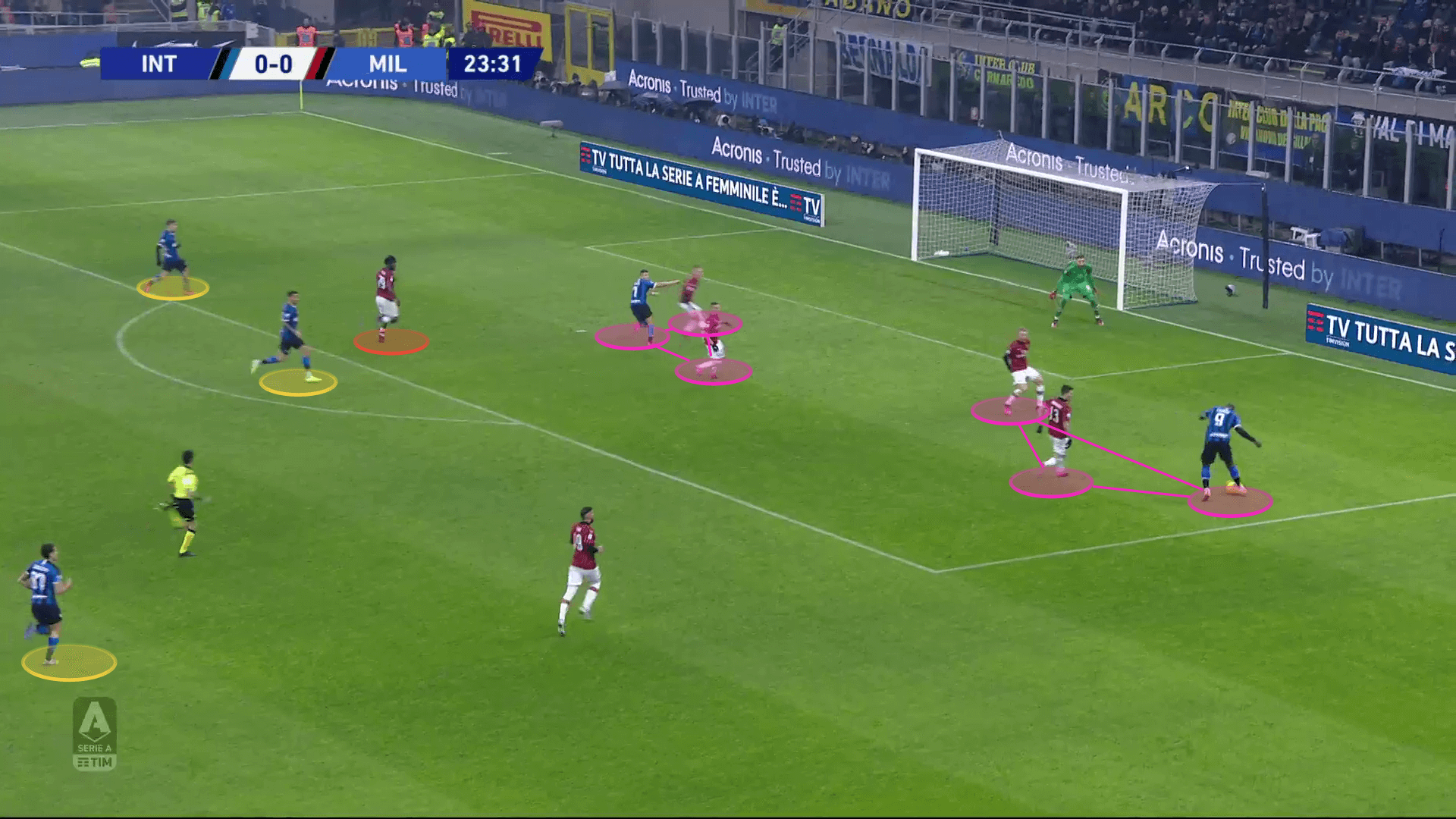
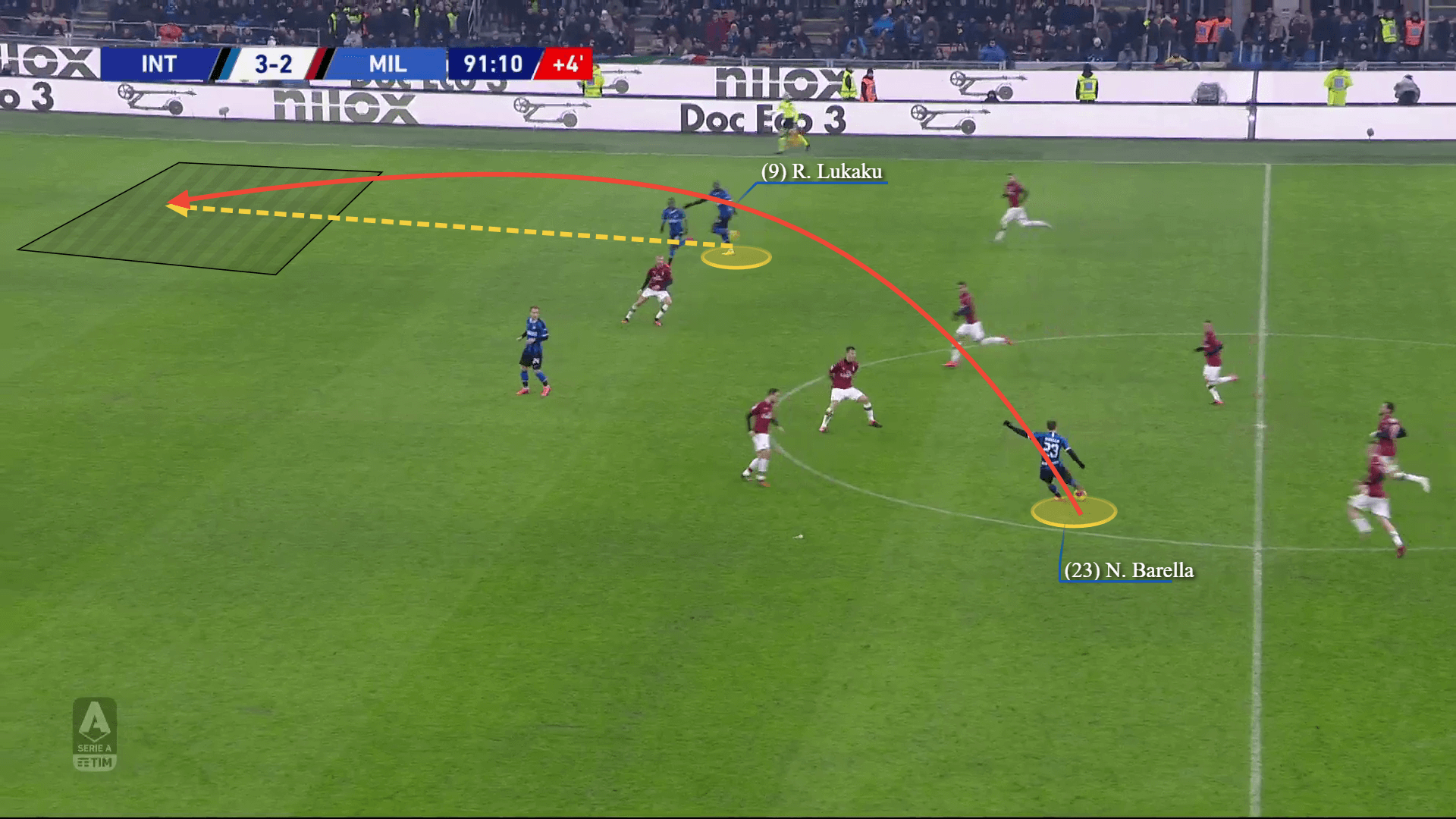
He is also a great option for executing counter-attacks. Inter created six counters throughout the game and what made them that hard to defend is Lukaku’s positioning and movement. He would frequently drop back to pick up the ball and advance it or link-up-play with his teammates creating a beautiful and smooth transition, knocking out their markers.
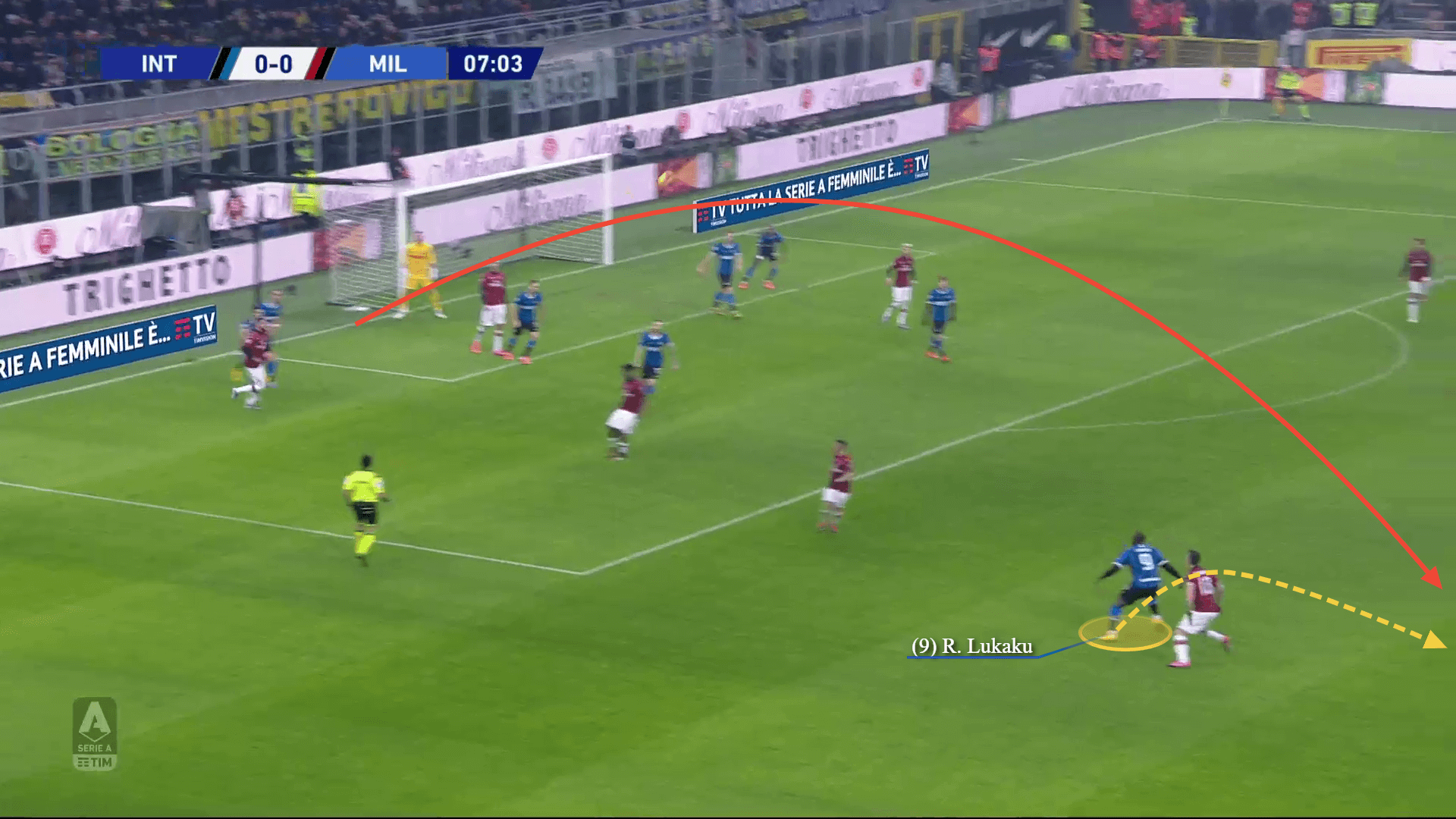
Milan’s inability to convert the chances into goals
Milan were effective in creating goalscoring chances but not in converting them into goals. The high pace and use of short pass combinations helped them to advance the ball to the final third, but Ibrahimović’s natural positional flair wasn’t enough for them to convert their 17 shots. Their two goals were actually the only two shots on target that Milan managed to send.
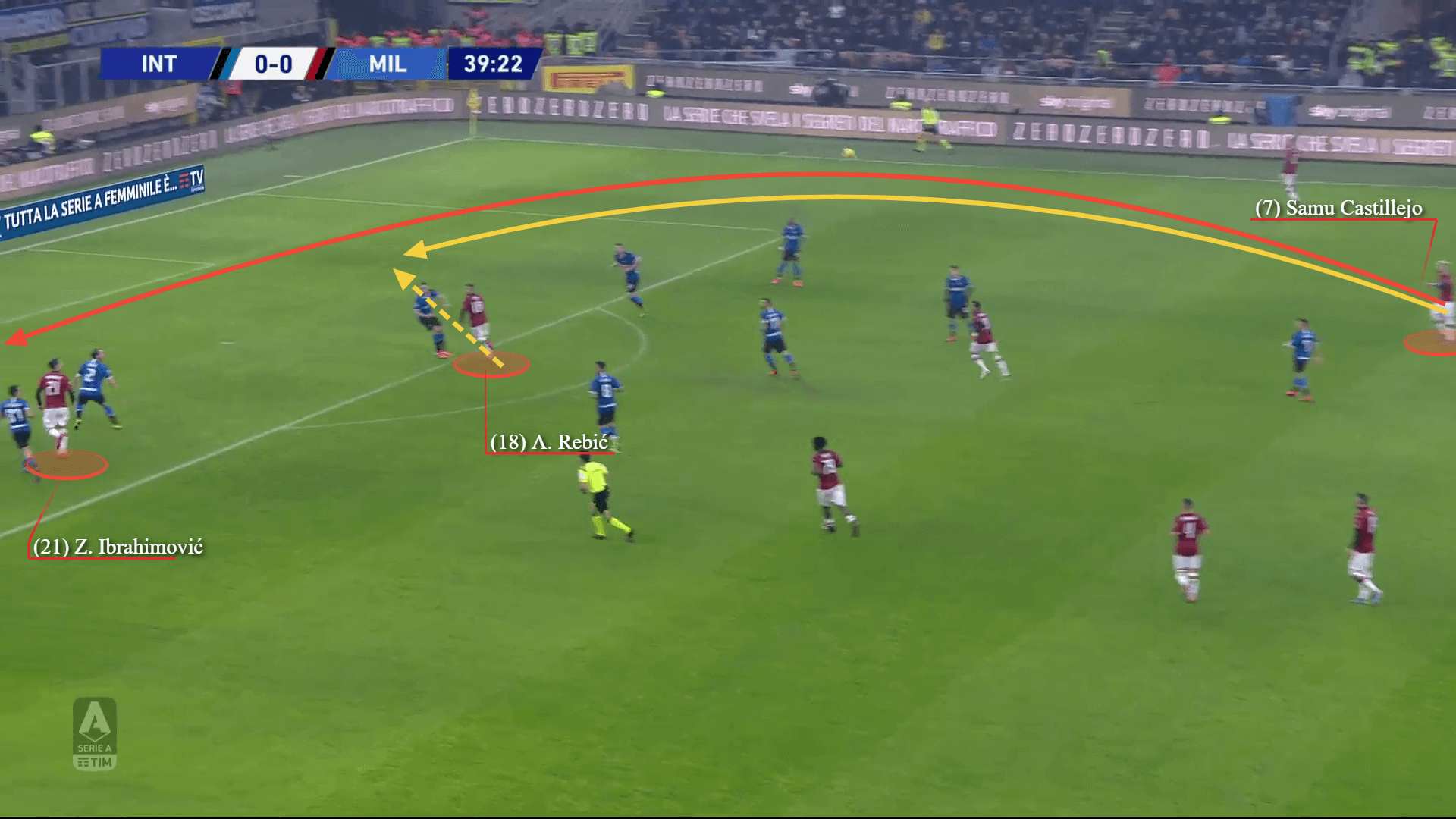
The team dribbled past their opponents successfully 13 out of 17 times, but the lack of good finishing and strong work under pressure waster their efforts. Rebić did try to cut inside and help in and around the box, but Inter’s increased defensive awareness in the second half allowed them to shoot (off-target) only four times.
Conclusion
Their spirits might have been boosted by the Serie A derby feeling but Inter showed their champion side and proved they can stand on their feet and get back from losing positions. This analysis showed their ability to make in-game changes/improvements and get the most out of their chances. Milan played well too and showed that they are on the right track and Pioli is likely to bring them to happier times. Showing consistency though would be crucial for their results from now on.





Comments